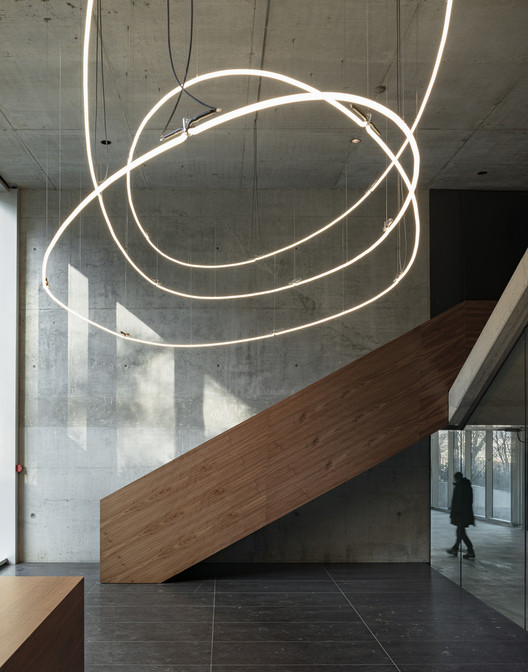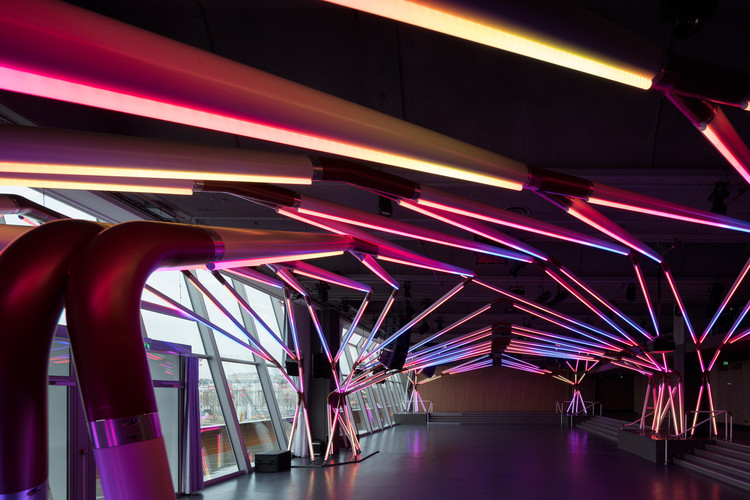
Light serves an essential purpose in architecture: to help us see. Whether it be through natural or artificial methods, rooms must be illuminated accordingly so occupants can safely inhabit them and fulfill their daily functions. When the right system is selected, light can also contribute to energy efficiency and sustainability within the building as a whole. However, apart from its evident functional and environmental value, lighting design can vastly impact the visual comfort and aesthetic tone of interiors by drawing attention to textures, enhancing colors and defining volumes. Therefore, of the many pieces involved in interior design, lighting is certainly one that can enhance or destroy a space and even affect users’ well-being, which is why it should be considered a crucial design element by itself.
Of course, natural light will always be the most comfortable for users since it is the source of illumination to which our eyes adapt naturally. However, most projects also require effective artificial lighting to illuminate in the dark or in areas that natural light does not reach, maximizing the functional and aesthetic quality of spaces. With so many systems available (direct, indirect, diffused, effect, and accent lighting) and their evolution with new design trends and technologies, there are endless design possibilities to choose from. With this in mind, selecting the right way to artificially illuminate a modern space – and, at the same time, enhance its architecture and unleash creativity – can be very challenging.

Therefore, to help inspire designers and architects, we present some creative and unique ways to use artificial light as a powerful design statement through a round-up of inspiring projects.
Sculptural statement pieces
Among them, sculptural lighting pieces have become a trend in contemporary interior design. Often being linear elements attached to the ceiling or hanging from it, these tend to provide direct focalized light, meaning that the placement of the luminaries responds to certain conditions of the space (for example, work positions) and the luminous flux hits the surface directly, distributing light across the room as it is absorbed by walls and ceilings. It is important to consider, nonetheless, that direct illumination should be employed with caution, as it can create "hard" shadows if not properly studied that can become visually tiring. Also, it must not be placed above surfaces that glare or reflect.
With limitless shapes to explore, these eye-catching, sculptural pieces can be elegant and dramatic, adding a strong character and aesthetic value to a room. Thus, they are ideal in spacious environments where they can draw attention while still being effective, such as workspaces, lobbies, restaurants, and leisure spaces.








Adding bold colors
In addition, artificial systems also offer the possibility of colored light. And among all the ways to achieve color, neon lights are a classic option. Either in the form of signs or linear shapes, these balance a retro aesthetic with a bold modern statement that can revitalize an architectural space. Created by shaping hollow glass tubes, partially evacuating the air, and passing a high-voltage electric current, neon light is emitted with a gas that activates the current. Thus, by applying different gases, tints or phosphor coatings, color options are practically infinite.
In contrast, LED technology uses strips of light emitting diodes which, when strung together, give the illusion of a neon-like effect. Also, in comparison to neon lights, LED systems offer a directional light source (instead of a wide light source), greater energy efficiency, and tend to be more cost-effective. Nevertheless, both are ideal in allowing any desired color, contributing to a playful and unique tone.








Eye-catching pendant fixtures
Hanging from the ceiling at adaptable heights, pendant lighting is the most practical way to control the placement of a light source – and is hence one of the most popular direct light systems. Whereas evenly distributed pendant lights achieve more uniform lighting across a space, using fewer localized fixtures can accentuate specific elements while still distributing light across walls and ceilings. But, how to determine how many hanging luminaires will be needed to properly illuminate the space? Essentially, three key points must be carried out: calculating the square footage of the space, the necessary foot candles by room type, and the needed lumens.
After this is defined, pendant systems offer a high design flexibility with a wide range of styles, sizes, cords, and shapes. Thus, these can be as simple or as complex as the project’s style demands: from the most intricate mechanical sculpture for a striking effect to a single bulb on a cord for a minimalistic industrial look.








For more inspiration, take a look at these innovative lighting fixtures.


















